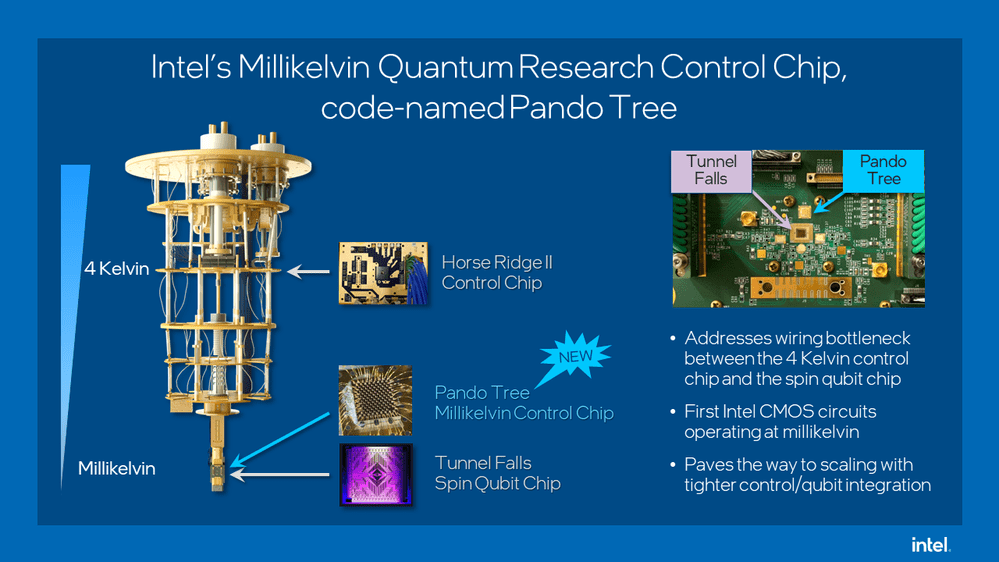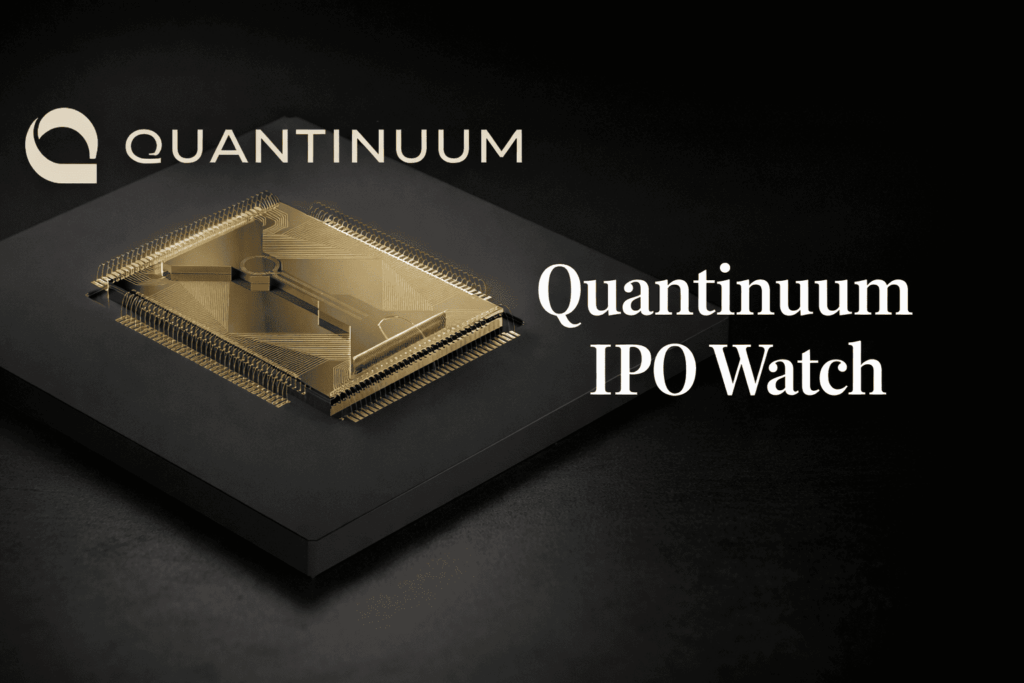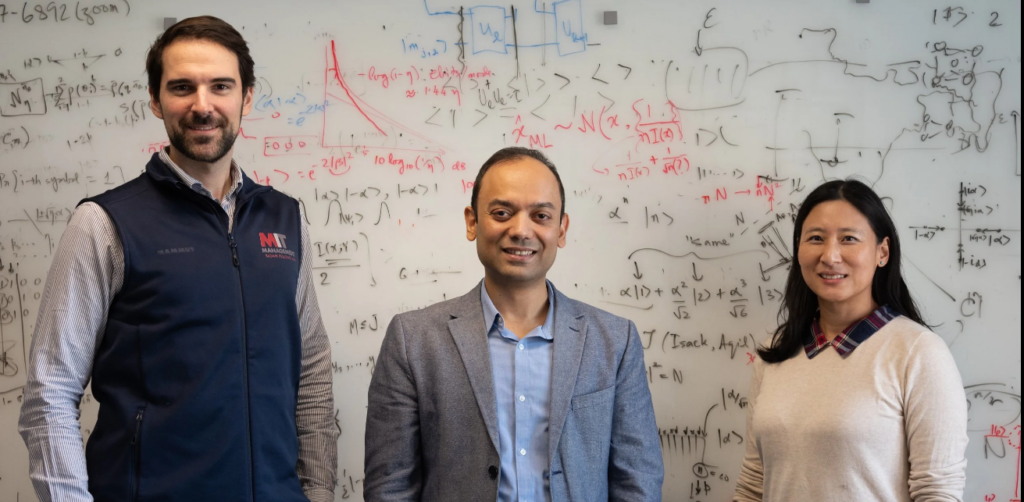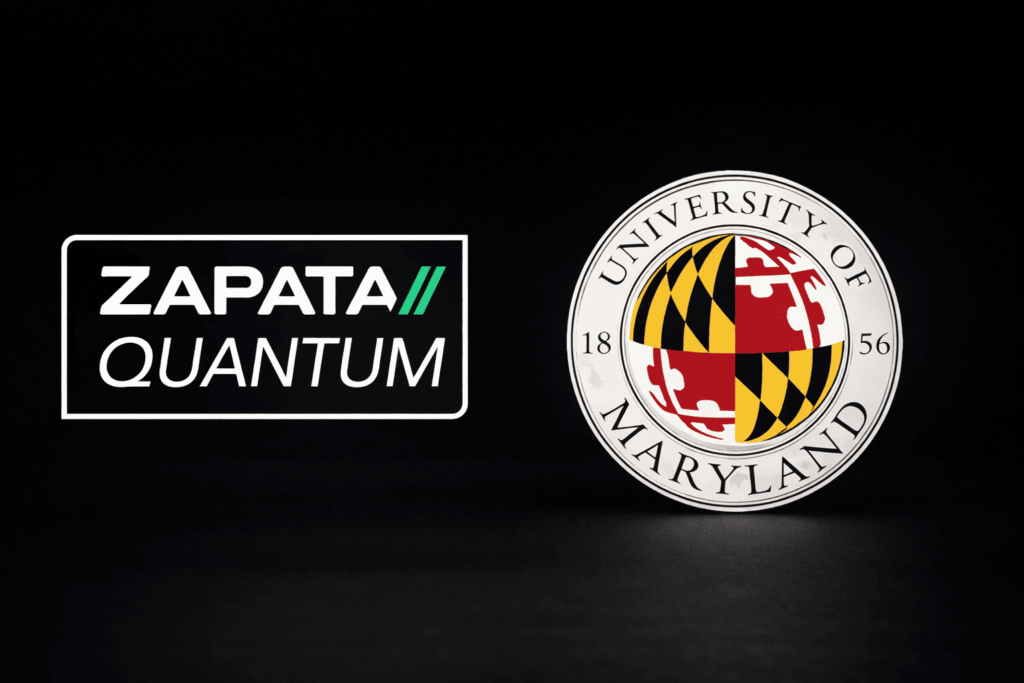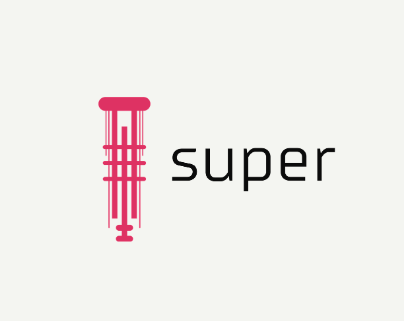- Intel has introduced a millikelvin quantum research control chip, dubbed Pando Tree.
- The company reports this is the first semiconductor manufacturer to demonstrate the distribution of cryogenic silicon spin qubit control electronics within a dilution refrigerator.
- The advance represents a significant step forward in addressing the wiring bottleneck that limits the scaling of quantum computing, according to the company.
Intel has introduced a millikelvin quantum research control chip, dubbed Pando Tree, that company researchers reports sets a new standard in quantum computing. According to a company post on the advance, this is the first semiconductor manufacturer to demonstrate the distribution of cryogenic silicon spin qubit control electronics within a dilution refrigerator, Intel’s innovation marks a significant step forward in addressing the wiring bottleneck that limits the scaling of quantum computing.
The research was presented at the 2024 IEEE Symposium on VLSI Technology & Circuits.
Tackling the Quantum Control Challenge
Quantum computing’s potential hinges on the ability to scale up qubit control systems effectively, according to the post. Traditional control electronics, operating at room temperature, face significant challenges in maintaining signal fidelity and managing the complex wiring required to interface with qubits, which operate at cryogenic temperatures. Intel’s Pando Tree chip, operating at 10 to 20 millikelvin, aims to overcome these obstacles by providing closer integration of control electronics to qubits, thereby reducing the wiring complexity and improving overall system efficiency.
Intel’s solution involves a dual-chip system: Horse Ridge II, operating at 4 kelvin, and Pando Tree at millikelvin temperatures. The company breaks it down this way: Horse Ridge II generates the necessary control voltages and communicates with Pando Tree through a single signal line and multiple digital control signals. Pando Tree, serving as a demultiplexer, distributes these control signals to the qubits, significantly reducing the number of wires needed.

Pando Tree can deliver both constant voltage bias and high-speed voltage pulses to up to 64 qubit terminals, the largest interconnect demultiplexing capability demonstrated to date in millikelvin control electronics. This capability is crucial for optimizing qubit performance and implementing complex quantum algorithms.
The team writes: “Pando Tree is a key step in addressing the quantum computing interconnect bottleneck. Quantum chips are stored in low, cryogenic temperatures in the dilution refrigerator while traditional control electronics that control the qubits operate at room temperature. Getting the control electronics to operate at high fidelity at cryogenic temperatures is important to overcoming the wiring bottleneck. Pando Tree enables a denser level of integration between the controller and the qubit chip.”
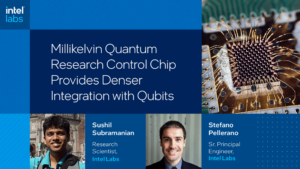
Addressing the Wiring Bottleneck
The primary challenge in scaling quantum computers is the wiring bottleneck between the different temperature stages in the dilution refrigerator. Quantum chips need to operate at millikelvin temperatures, while traditional control electronics work at room temperature.
Intel has taken a deliberate, evolutionary approach at uncorking this bottleneck.
The introduction of Horse Ridge in 2020 was Intel’s first step in addressing this challenge, simplifying the system design and reducing the need for bulky equipment and extensive wiring.
Horse Ridge II further streamlined control wiring, but a bottleneck remained between the 4 kelvin and millikelvin stages. Pando Tree tackles this issue by operating at millikelvin temperatures, allowing for denser integration between the controller and the qubit chip. This proximity reduces the wiring complexity and enhances control fidelity.
Implications for Quantum Scaling
Pando Tree’s ability to demultiplex control signals means that controlling N qubits requires only approximately log(N) input signals.
To hopefully explain a little more simply: Pando Tree’s ability to split control signals means that to control N — which represents any number — qubits, you only need about the same number of input signals as the number of times you can double 2 to reach that number.
So, if you have 1,000 qubits, you would only need about 10 input signals instead of 1,000. To show how this ramps up, controlling one million qubits would typically require over one million cables, but with Pando Tree’s demultiplexing capabilities, only about 20 cables are needed.
While the interface between Pando Tree and the qubits still requires many interconnects, the close integration at millikelvin temperatures allows for advanced packaging technologies to manage these connections efficiently.
Equations aside, Intel says this will drastically reduce the number of cables needed.
Although Intel’s current experimental results did not rely on its advanced packaging technologies, Intel writes that Pando Tree is designed to be compatible with the company’s standard packaging solutions, such as Flip Chip Ball Grid Array 2D (FCBGA 2D) and Foveros 2.5D and 3D packaging technologies.
This compatibility will enable future scaling of quantum systems by leveraging these advanced packaging methods to manage the dense interconnects required between Pando Tree and the qubit chip.

